| Amount Per 0.25 pizza | |||
| Calories | 380 Kcal (1591 kJ) | ||
| Calories from fat | 126 Kcal | ||
| % Daily Value* | |||
| Total Fat | 14g | 22% | |
|---|---|---|---|
| Saturated Fat | 6g | 30% | |
| Cholesterol | 30mg | 10% | |
| Sodium | 750mg | 31% | |
| Total Carbs | 47g | 16% | |
| Sugars | 3g | 12% | |
| Dietary Fiber | 2g | 8% | |
| Protein | 16g | 32% | |
| Vitamin C | 3.6mg | 6% | |
| Vitamin A | 1.2mg | 40% | |
| Iron | 0.4mg | 2% | |
| Calcium | 200mg | 20% | |
* Percent Daily Values are based on a 2000 calorie diet. Your daily values may be higher or lower depending on your calorie needs.
Find out how many calories should you eat.
Ingredients And Nutrition Overview
Best
choice Good
choice Poor
choice Avoid
it!
choice Good
choice Poor
choice Avoid
it!
-
WeightWatchers Points: 8.4, PointsPlus: 10, SmartPoints: 12
WeightWatchers Points are estimated by carbohydrates, fats, protein and fiber in product. They are not an affirmation of better quality or nutritional value of the product or its manufacturer. Only way to count for dieters. Less points are better.
Read more at Weight watchers diet review -
Very high in saturated fat
Not all fats are created equal. Saturated fats are the ones responsible for bad cholesterol buildup in our blood vessels, as well as contributing to coronary disease.
-
Contains nitrites/nitrates
This product contains one or more of the following: - Sodium nitrite - Sodium nitrate - celery powder Sodium nitrite and its closely related sodium nitrate are food preservatives used primarily in prepared meat and fish such as ham, bacon, hot dogs, corned beef (spam), luncheon meats, and smoked fish. They help the meat look nice and red instead of grayish. Unfortunately, when cooked or broken down in the stomach, nitrites form nitrosamines (also called N-Nitroso Compound), which can cause cancer in young children and pregnant women. Sources: ----------- S C Larsson, A Wolk - Red and processed meat consumption and risk of pancreatic cancer: meta-analysis of prospective studies Br J Cancer. 2012; 106(3): 603–607. Risch HA, Jain M, Choi NW, Fodor JG, Pfeiffer CJ, Howe GR, Harrison LW, Craib KJ, Miller AB. - Dietary factors and the incidence of cancer of the stomach. Am J Epidemiol. 1985;122(6):947-59. Ji BT, Chow WH, Gridley G, Mclaughlin JK, Dai Q, Wacholder S, Hatch MC, Gao YT, Fraumeni JF Jr. - Dietary factors and the risk of pancreatic cancer: a case-control study in Shanghai China. Cancer Epidemiol Biomarkers Prev. 1995;4(8):885-93. Nöthlings U, Wilkens LR, Murphy SP, Hankin JH, Henderson BE, Kolonel LN. - Meat and fat intake as risk factors for pancreatic cancer: the multiethnic cohort study. J Natl Cancer Inst. 2005;97(19):1458-65. Aschebrook-Kilfoy B, Cross AJ, Stolzenberg-Solomon RZ, Schatzkin A, Hollenbeck AR, Sinha R, Ward MH. - Pancreatic cancer and exposure to dietary nitrate and nitrite in the NIH-AARP Diet and Health Study. Am J Epidemiol. 2011;174(3):305-15. Preston-Martin S, Pogoda JM, Mueller BA, Holly EA, Lijinsky W, Davis RL. - Maternal consumption of cured meats and vitamins in relation to pediatric brain tumors. Cancer Epidemiol Biomarkers Prev. 1996;5(8):599-605. Knekt P, Järvinen R, Dich J, Hakulinen T. Knekt P, Jarvinen R, Dich J, Hakulinen T. - Risk of colorectal and other gastro-intestinal cancers after exposure to nitrate, nitrite and N-nitroso compounds: a follow-up study. Int J Cancer. 1999;80:852–856. Zhu Y, Wang PP, Zhao J, Green R, Sun Z, Roebothan B, Squires J, Buehler S, Dicks E, Zhao J, Cotterchio M, Campbell PT, Jain M, Parfrey PS, Mclaughlin JR. - Dietary N-nitroso compounds and risk of colorectal cancer: a case-control study in Newfoundland and Labrador and Ontario, Canada. Br J Nutr. 2014;111(6):1109-17.
-
For dieters: FoodPoints value is 9
* FoodPoints are calculated by Fooducate based on fats, carbs, fiber, and protein. They are not an endorsement or approval of the product or its manufacturer. The fewer points - the better.
-
Puffed up with protein?
Protein is important, but some of the protein you find in this product isn't exactly natural. The protein comes from one of the following sources: - milk protein concentrate - whey protein isolate - soy protein isolate While it's fine to get some of your protein from supplemented items, keep in mind that they are not "natural" sources and that it's not ideal to get protein only from processed goods. If you're looking for more protein, try beans, quinoa, nuts, seeds, peas and spinach & leafy greens. Not only do they have protein, they're filled with other vitamins and minerals.
-
Controversial additive BHA used
BHA (Butylated Hydroxyanisole) is a synthetic antioxidant additive. It is used to extend the shelf life of fats, oils, and oil-containing foods, including cereals, gums, and potato chips. The FDA approves it as safe despite the fact that the Department of Health and Human Services considers BHA to be "reasonably anticipated to be a human carcinogen." Alternatives to BHA are vitamin E or tocopherols, different packaging methods, or simply omitting it.
-
Controversial additive BHT present
Butylated hydroxytoluene (BHT) is an additive used to retard rancidity in oils and foods containing oils and fats. Some studies have shown it to be carcinogenic. Best to avoid
-
Highly Processed!
This product is highly processed. If you'll take a look at its ingredient list, you'll discover new words to add to your vocabulary. Many of theses ingredients are required to increase the shelf life of the product and improve the flavor that disappears when food is not fresh.
-
No whole grains here
Whole grains are a great source of fiber and other nutrients. Fiber is one of the most important nutrients lacking in the modern American diet. Unfortunately, this product does not contain enough whole grains, if any. If there is fiber in here, it's probably added fiber and not naturally occurring. Whole grains are not the only way to consuming fiber, BUT by choosing them instead of processed grains you've made a smart choice. If you'd like to eat a bit better, try for something that contains whole grains.
-
Contains milk protein concentrate
Milk Protein Concentrate (MPC) is a white to light-cream-colored dry powder. It is a very cheap milk byproduct of skim milk through a series of processes that includes ultrafiltration, evaporation and drying of the milk until it reaches a powder form. Some more info: - Most of the MPC's are imported as a dry powder from countries with lax food safety regulations (China for example). - MPC's are added to processed food products to increase the amount of protein without increasing the carbs. Some view the increased presence of MPC in food products as a result of the low-carb diet craze, others see it as a way to cheaply increase the nutrition of processed foods. Sources: ------ Huffman LM, Harper WJ. Maximizing the value of milk through separation technologies. J Dairy Sci. 1999;82(10):2238-44. Alvarez VB, Wolters CL, Vodovotz Y, Ji T. Physical properties of ice cream containing milk protein concentrates. J Dairy Sci. 2005 Mar;88(3):862-71. US Food & Drug Administration, Marketing & Policy Briefing Paper. U.S. Imports of Concentrated Milk Proteins: What We Know and Don't Know?, February 2003, Ed Jesse (University of Wisconsin) United States General Accounting Office. Imports, Domestic Production, and Regulation of Ultra-filtered Milk, March 2001, United States General Accounting Office
-
Natural flavors added. Learn why
Companies add flavorings to make products taste better. They are created in a lab and the formulations are guarded as trade secrets. Flavorings can compensate for flavor loss during processing, substitute for ingredients, lower production costs and increase shelf stability. Natural flavorings are more expensive to source than artificial flavors, but tend to be better received by consumers. People sensitive to MSG, vegans, vegetarians and those with allergies should pay special attention to the phrase "natural flavorings" since glutamates, animal products or allergens may be the source of natural flavors. You can always contact the manufacturer for more information.
-
Learn about Xanthan Gum, found here
Xanthan gum is an emulsifier. It helps ingredients blend more effectively and stay blended while waiting on a shelf. For example – water and oil mixtures, as well as bits of spice in a salad dressing. Xanthan Gum is made by fermenting corn sugar with a bacteria, Xanthomonas campestris. It’s the same bacteria that creates black spots on broccoli and cauliflower. The result is a slimy goo that is then dried up and ground into a fine white powder.
-
Sodium Aluminum Phosphate
This product contains sodium aluminum phosphate. Food manufacturers will tell you that this additive is not a problem. And yes, normally, people will have some amount of aluminum in their body by means of inhalation, ingestion or dermal contact. The Department of Health and Human services says most this aluminum will leave your body quickly through feces, and the small amount that enters your bloodstream will leave via urine, but . . . they also say that excess aluminum can cause problems. Some research has implicated aluminum with Alzheimer's and research both supports and refutes this. Doctors blame aluminum of exacerbating the effects of kidney disease and causing bone or brain diseases. Bottom line: There's no tangible benefit of consuming products with sodium aluminum phosphate. To err on the side of safety, particularly with products you consume everyday, choose ones without added aluminum.
You Might Also Like
% RDI of Main Nutrition Facts
19%
of RDI* (380 calories) 149 g
-
Cal: 19 %
-
Fat: 21.5 %
-
Carb: 15.7 %
-
Prot: 32 %
-
0%25%75%RDI norm*
Calories Breakdown
- Carbs (49.7%)
- Fat (33.3%)
- Protein (16.9%)
Get Your Recipe of Health!
Follow RecipeOfHealth on Facebook!


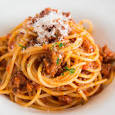
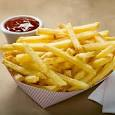

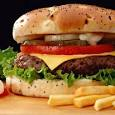
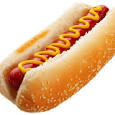
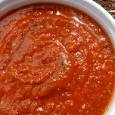
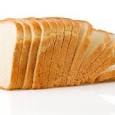
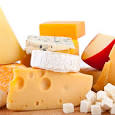
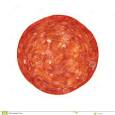
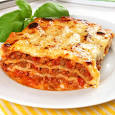
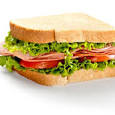

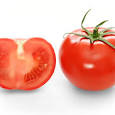
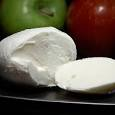
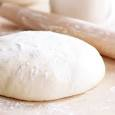
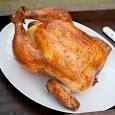
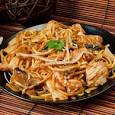
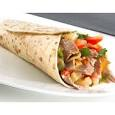














Add your comment